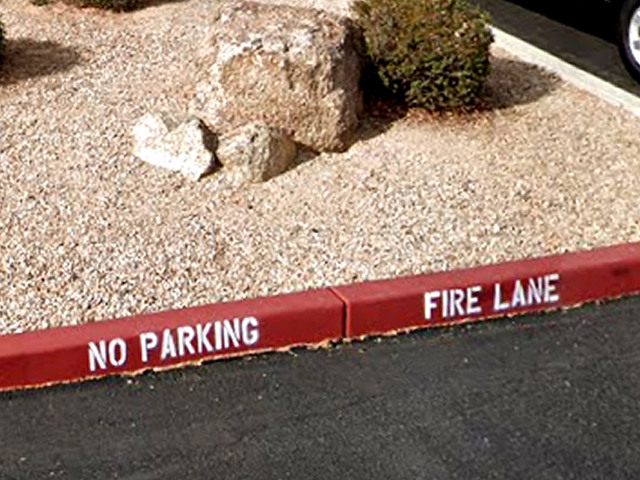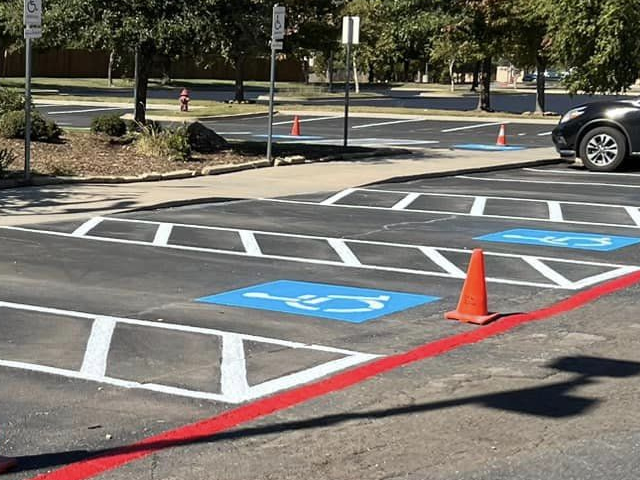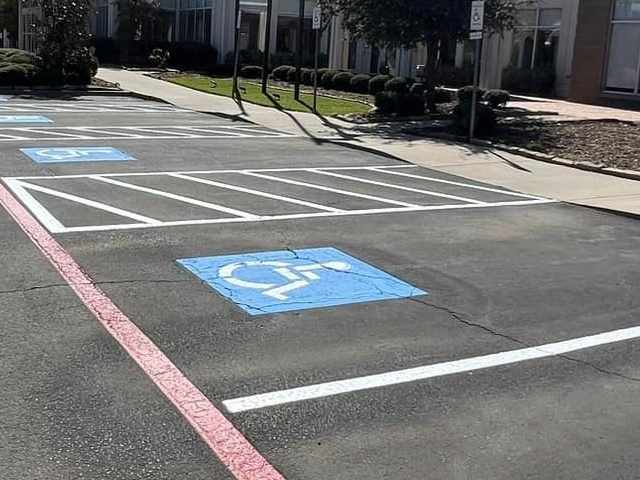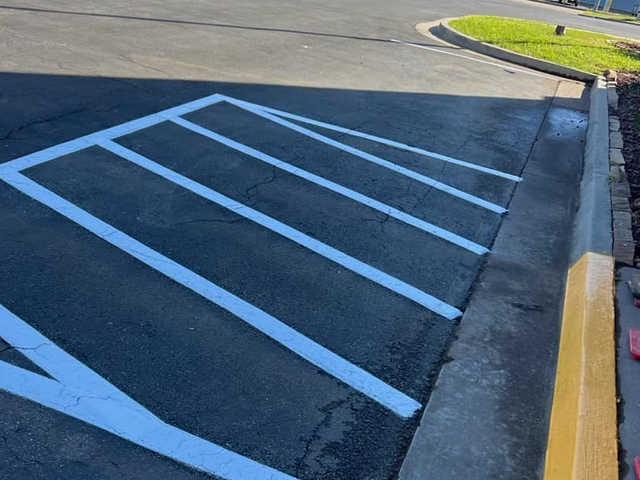How Long Does It Take for Parking Lot Striping to Dry?
Parking lot striping is a crucial part of maintaining a safe, organized, and visually appealing parking lot. One of the most frequently asked questions by business owners and property managers is, “How long does it take for parking lot striping to dry?” The drying time of parking lot striping can vary based on a few key factors, such as the type of paint used, weather conditions, and traffic levels. This guide will break down everything you need to know about drying times so you can plan accordingly for your parking lot project.


List Of Things That Affect Parking Lot Striping Drying Time
1. Type of Paint Used
The type of traffic paint chosen for parking lot striping significantly impacts drying time. Different paints have unique properties and drying rates, and your contractor will select a paint based on your lot’s traffic volume, local climate, and budget. The most common types of paint include:
- Water-based acrylic paint: This is one of the most commonly used paints for parking lot striping due to its fast-drying properties and eco-friendliness. Under ideal conditions, water-based acrylic paint can dry in as little as 30 minutes to 1 hour. However, it’s important to note that while the surface might feel dry to the touch, it could take longer to fully cure, especially in humid conditions.
- Oil-based paint: Known for its durability, oil-based paint takes longer to dry than water-based options. On average, oil-based paints can take 2 to 4 hours to dry. This type of paint is more suitable for parking lots that experience heavy vehicle traffic or harsher weather conditions.
- Thermoplastic markings: Thermoplastic striping requires a specialized process where the material is melted and applied to the surface. While this material cools and hardens relatively quickly (usually within a few minutes), it requires precision and experienced handling to ensure proper adhesion. Thermoplastic is ideal for areas where durability is a priority.
2. Weather Conditions
Weather is one of the most important factors that can impact the drying time of parking lot striping. Since our company provides services across the nation, it’s essential to consider regional climate variations.
- Hot and Dry Climates (like Arizona or Nevada): In areas with high temperatures and dry air, paint tends to dry more quickly. Water-based acrylic paints may dry in as little as 20-30 minutes, while oil-based paints will typically dry within 1-2 hours. However, extremely hot temperatures can sometimes cause the paint to dry too quickly, potentially leading to cracks or an uneven finish.
- Cold Climates (like the Midwest or Northeast during winter): Cold weather can significantly slow down the drying process. In colder regions, even water-based paints can take several hours to dry, and oil-based paints might take 6 or more hours. For this reason, striping is typically done during warmer months or when temperatures are above 50°F.
- Humid Climates (such as the Southeast): Humidity can extend drying times, especially for water-based paints. In areas with high moisture levels, you might see drying times closer to 1-2 hours for water-based paints and 3-6 hours for oil-based options. It’s essential to account for this extra drying time before allowing vehicles back on the lot.
- Rain and Moisture: Wet conditions can be a major challenge. Striping should only be done when the surface is completely dry. If it rains shortly after striping, the paint may not adhere properly and can wash away. After a rainstorm, it’s essential to wait for the surface to dry before starting the striping process, which may delay the project by a few hours or even days.
3. Traffic Levels
The amount of traffic in your parking lot can also affect when the striping will be ready for use. For high-traffic parking lots, it’s crucial to allow adequate drying time to prevent smudging or fading before cars start driving over the freshly painted lines.
- Low-traffic areas: If the parking lot serves a smaller number of vehicles, you can often open the lot for use as soon as the paint is dry to the touch, which may be within 1-2 hours for water-based paint or 3-4 hours for oil-based paint.
- High-traffic areas: For lots with heavy traffic or large commercial vehicles, it’s better to err on the side of caution and wait until the paint has fully cured, which may take 24 hours or more, depending on the weather and type of paint.
Best Practices for Parking Lot Striping Drying Time
- Plan around weather conditions: It’s always best to schedule striping on days when the weather is clear, and temperatures are within the recommended range for the paint type being used. Avoid rainy or overly humid days, and if possible, aim for moderate temperatures between 50°F and 90°F.
- Allow extra drying time: Even if the paint feels dry to the touch, giving it extra time to cure can prevent premature wear and tear. If possible, keep traffic off the freshly painted surface for at least 12-24 hours to ensure optimal durability.
- Coordinate with your striping contractor: Your parking lot striping contractor will be able to advise you on the best timing for reopening your lot based on the specific conditions in your area and the type of paint used.
The drying time for parking lot striping depends on several factors, including the type of paint, weather conditions, and traffic levels. On average, water-based acrylic paint can dry in as little as 30 minutes to 1 hour, while oil-based paint may take 2-4 hours to dry. However, it’s crucial to allow additional time for curing, especially in areas with heavy traffic or harsh weather conditions. By carefully planning your striping project around these factors, you can ensure a long-lasting, high-quality line striping result.
If you’re ready to stripe your parking lot or need advice on the best approach for your region’s weather conditions, contact us today. We’re here to provide expert service tailored to your specific needs!



